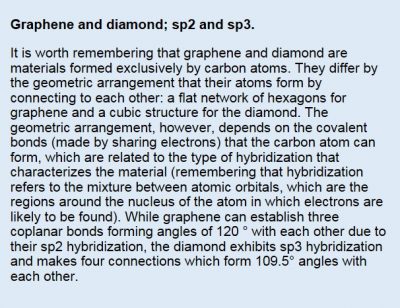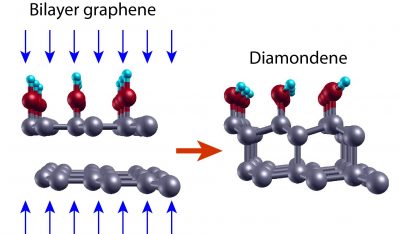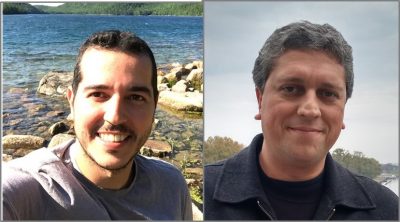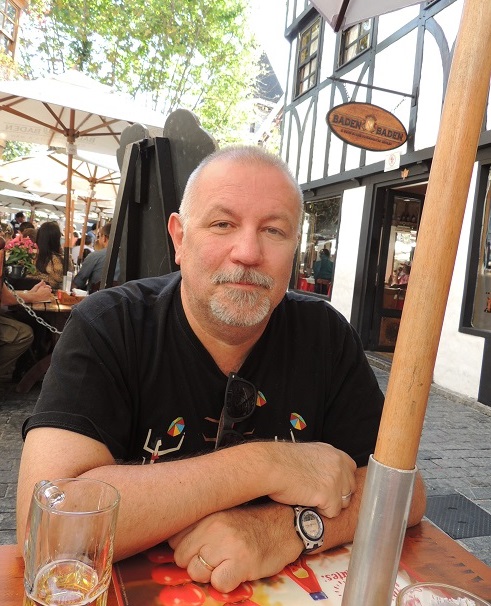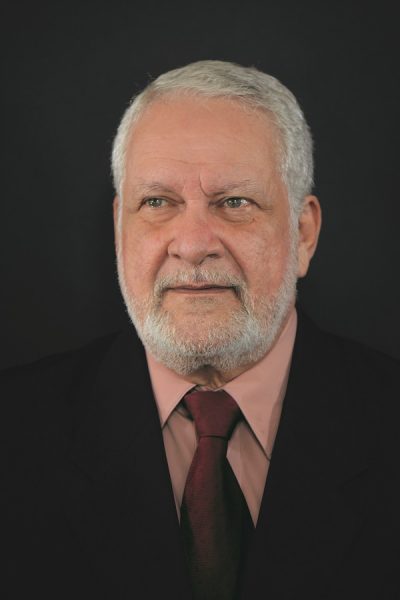 Brazil, besides having one of the world’s largest reserves of ores with lanthanide elements, also occupies a prominent place in the research of these elements and their compounds, which have significant applicability in strategic areas such as energy, health and catalysis, as well as in many other areas.
Brazil, besides having one of the world’s largest reserves of ores with lanthanide elements, also occupies a prominent place in the research of these elements and their compounds, which have significant applicability in strategic areas such as energy, health and catalysis, as well as in many other areas.
One of the most prominent Brazilian scientists in this research field is Oscar Manoel Loureiro Malta, born in the city of Recife (state of Pernambuco) 63 years ago. Malta is Professor at the Department of Fundamental Chemistry of the Federal University of Pernambuco (UFPE). Over the course of four decades, he has made important contributions to the research on lanthanides, both in the fundamental and applied fields.
Malta defined his interest in science during his high school years. In 1974, he started the Chemical Engineering course at UFPE and the Physics course at the Catholic University of Pernambuco. After completing his degree in Physics, he left the Chemistry course to join the Master’s degree in Physics at UFPE. There he carried out research work on spectroscopy of lanthanide compounds, mentored by Professor Gilberto Fernandes de Sá. In December of 1977, he obtained the master’s degree. He continued his studies on lanthanide spectroscopy in his doctorate at the University of Paris VI (France), also known as Pierre et Marie Curie Université, guided by Professor Yves Jeannin. He obtained his doctorate in March 1981. He then returned to Recife, where that same year he became professor at UFPE. In 1986, he returned to France for one year as a visiting researcher in the group of Paul Caro, a world-renowned scientist in the lanthanide area, linked to the French National Center for Scientific Research (CNRS).
Oscar Malta was visiting professor in several international institutions: University of Wroclaw (Poland) in 2015; University of Aveiro (Portugal) in 2005; Industrial University of Santander (Colombia) in 2000; University of São Paulo, USP, in 1995, 1996 and 1999, and Paulista State University Júlio de Mesquita Neto, UNESP, in 1994-95 and 1998.
At UFPE, he participated in the creation and consolidation of the Department of Fundamental Chemistry, where he served as department head (1987-89) and postgraduate coordinator (1991-93 and 1999-2001). He was also the coordinator of two national research networks: the National Network of Molecular Nanotechnology and Interfaces, RENAMI (2001 – 2009), and the National Institute of Science and Technology for Integrated Markers, INAMI (2009-2015).
Malta has received a number of acknowledgments for his scientific trajectory. On November 15, 2017, he received an honorary doctorate from the University of Wroctaw, an important institution in Poland where nine Nobel laureates have emerged. In 2016, a special edition of the Journal of Luminescence (publisher Elsevier) on lanthanide spectroscopy was dedicated to this researcher from Pernambuco (https://doi.org/10.1016/j.jlumin.2015.11.024). In 2015, Malta received the Ricardo Ferreira Award for Scientific Merit, recently created by the Foundation for Science and Technology of Pernambuco, Facepe. In 2014, he received the Professor Paulo José Duarte Medal from the Brazilian Chemistry Association. In 2003, he became a full member of the Brazilian Academy of Sciences, ABC.
In this year, Malta was chairman of the International Conference on Luminescence (ICL), which, after seventeen editions in the northern hemisphere, was held in the Brazilian city of João Pessoa.
With a productivity research grant 1A of CNPq, Oscar Malta is the author of approximately 180 papers published in international journals, with about 7,000 citations in the Web of Science. The scientist has a 42 H index.
Here is our interview with Oscar Manoel Loureiro Malta.
SBPMat newsletter: What do you believe are your main contributions to the Materials area and why do you consider them more relevant?
Oscar Malta: Since my master’s degree, which I started in 1977, my work has been in the areas of theoretical chemistry, binding field theory, 4f-4f spectral intensities, non-radioactive energy transfer, in particular intramolecular energy transfer in coordination compounds with lanthanide ions whose theory I developed between 1996 and 1998 and which until today I continue working on, as well as several groups in Brazil and abroad. Over the last three decades, in a work that involves great and extraordinary synergy between theory and experiment, we have been able to construct a very successful scheme for the modeling of highly functional luminescent lanthanide ion coordination compounds with the potential for diverse applications such as luminescent markers in bioassays. Many of these results were obtained during the time I coordinated two national nanotechnology networks. The first, National Network of Molecular Nanotechnology and Interfaces (RENAMI), was in force from 2001 to 2009, the second, the National Institute of Science and Technology for Integrated Markers (inct-INAMI), was in force from 2009 to 2015. Coupled to these results two important themes were also developed: the effect of metal nanoparticle plasmas on the luminescence of compounds with lanthanide ions, a subject that is currently linked to the so-called plasmon, and the concept of polarizability of the coating region in the chemical bond as a way to quantify covalence, which I introduced between 2002 and 2005 in order to better understand the chemical bond involving 4f orbitals. This concept was subsequently generalized to any chemical bonding, from single molecules to complex materials. In all these results it is important to emphasize the students’ participation, from scientific initiation to the doctorate.
SBPMat Bulletin: You started researching in the field of lanthanide ion compounds spectroscopy in your master’s degree, 40 years ago, and you’re still working in the area. What most appeals to you in this research topic? Is it still a promising area? What has changed in the research in this area in Brazil since the 1970s so far?
Oscar Malta: Lanthanides and their compounds are fascinating. They took me into the world of theoretical chemistry, in the world of angular momentum algebra, in the world of the interaction of radiation with matter, and into the world of spectroscopy. When I finished my master’s degree, everything was in place for me to go on to do a doctorate in England to work in atomic physics. At that time he was in Recife, at the invitation of Gilberto Sá and Ricardo Ferreira, Paul Caro, one of the most renowned researchers in lanthanide spectroscopy. He presented a seminar that really impressed me. I gave up on going to England and went to work for Paul Caro’s group at CNRS in Meudon-Bellevue in France. At first the plan was to develop an experimental thesis. However, I wanted to work on the theory. Paul Caro accepted this without problems, and a very fruitful theory/experiment interaction emerged that extended to other groups and continues to this day, always with much to do from a fundamental point of view and from the point of view of applications. Brazil is one of the world leaders in this field, with extremely active and internationally recognized research groups in the country. In fact there is again a discussion about the production of lanthanides since Brazil is a country rich with the minerals of these elements, so important for today’s technology and undoubtedly for the future. We cannot overlook this.
SBPMat Bulletin: Now we invite you to leave a message for the readers who are starting their scientific careers.
Oscar Malta: There is now a strong tendency of young researchers (I am referring to the scientific area under consideration here) to exacerbate the value of applied science in a short-sighted manner. As a result they forget the theoretical foundations and they often do not know the history of the subject, even the experimental history, that they work with or intend to work with. It is exhausting (a fact) to notice this in scientific meetings and I usually am amazed. This is like a linear inflationary process in which money is thrown into the market without having a stabilizer. Sooner or later it ends up in trouble, problems whose creative solutions (an assumption that must accompany a scientist) could be found if greater investment had been deposited in the theoretical foundation and greater attention given to the history of the situation at hand. Therefore, with respect to this question, my message is: do not neglect good theoretical formation and the knowledge of the origin of the subject with which you intend to work. Countries that are now developing and exporting good technology realize how important this is.
SBPMat Bulletin: Feel free to share other comments with our community.
Oscar Malta: Science and technology are more than ever a social activity that requires creativity (as always), training, and therefore education, dedication and strong interdisciplinary cooperation. And it requires investments. Without these ingredients, coupled with sound and sensible ethics committees, we will not be able to create intelligent and reliable science and technology policies that will ensure the continuation of human civilization. The great astronomer Carl Sagan said that not taking these ingredients seriously and the notion that five billion years from now our solar system will have been burned (by our red giant), we will have no chance of getting out of here. This sounds like science fiction, but it’s not. Hopefully the next generations, especially our leaders, will realize this. But I am optimistic in this regard, like a great neuroscientist (Miguel Nicolelis) who wrote “Beyond Boundaries”, which I recommend to my colleagues in Materials Science – especially with respect to emerging properties.




